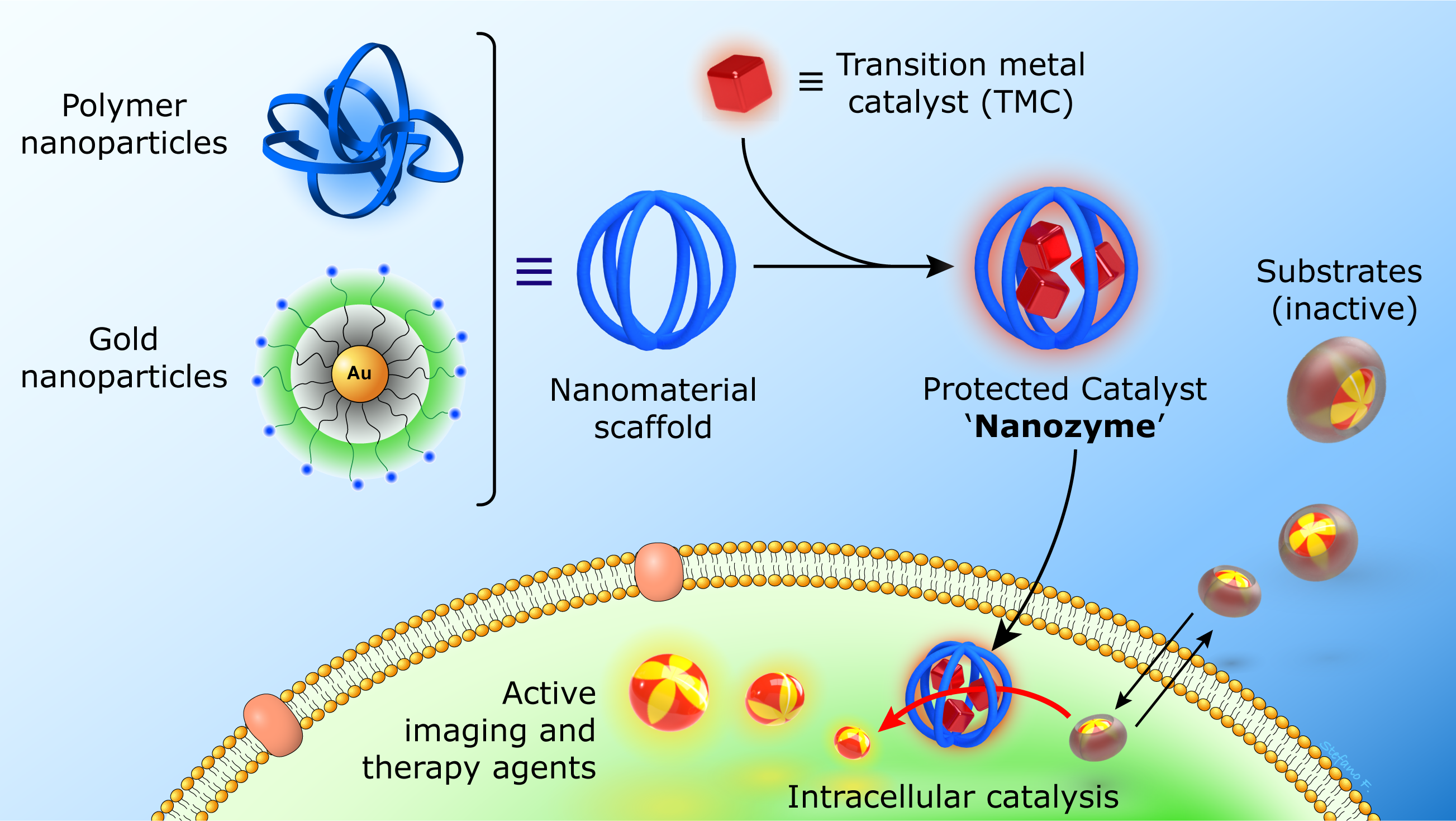Nanozymes and Polyzymes: the tools of bioorthogonal chemistry!
Fabrication of bioorthogonal polyzymes and nanozymes through encapsulation of TMCs into polymer and gold nanoparticles. Nanozymes and polyzymes can be used for the in-situ activation of therapeutic and imaging agents in biosystems.
Bioorthogonal chemistry uses reactions that do not interfere with natural bioprocesses, providing a new approach for imaging and therapeutic strategies. Bioorthogonal catalysis expands this chemistry employing catalytic reactions that natural enzymes cannot access. These reactions enable the creation of bioorthogonal ‘factories’ in living systems, for localized and controlled generation of drugs and imaging agents directly at the therapeutic site.
Transition metal catalysts (TMCs) are excellent candidates for bioorthogonal catalysis, offering high versatility and reactivity. However, the adoption of free TMCs in living systems faces challenges of solubility, catalyst deactivation and cytotoxicity from the metal. The incorporation of TMCs into nanomaterial scaffolds, as gold (AuNP) and polymer nanoparticles, provides solubility and stability to the catalysts, enabling their use in aqueous and biological media. Encapsulating the TMCs into these nanomaterials generates bioorthogonal “nanozymes” and “polyzymes”, providing efficient and robust platforms for bioorthogonal catalysis (schematized in figure). Moreover, these nanostructures can be easily engineered for active targeting, enhanced cellular uptake and stimuli-responsive activity, resulting in versatile tools for the biomedical application of bioorthogonal catalysis.
In our research, we adopt these tools for the treatment of two life-threatening biomedical targets: cancer and bacterial infections. Featuring nanomaterials, bioorthogonal catalysis enables dye and drug generation localized at the therapeutic zone, resulting in effective diagnoses and therapies with minimized side effects.
Selected publications:
- MedMat, 2024
- Materials, 2024
- Mater. Horiz., 2024
- JoPS, 2024
- Springer, 2023
- Nano Convergence, 2023
- Nano Convergence, 2023
- J. Controlled Release, 2023
- Adv. Mater., 2023
- ACS AMI, 2023
- Adv. Drug Delivery Rev., 2023
- Materials, 2022
- ACS Appl. Mater. Interfaces, 2022
- Chem. Soc. Rev., 2021

